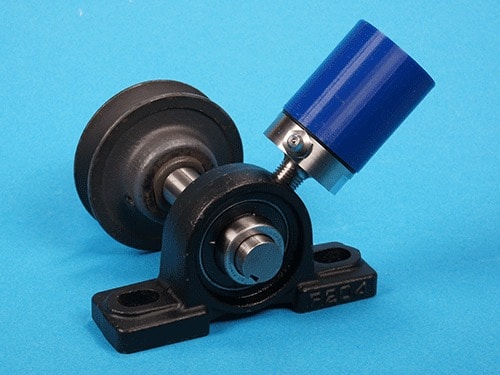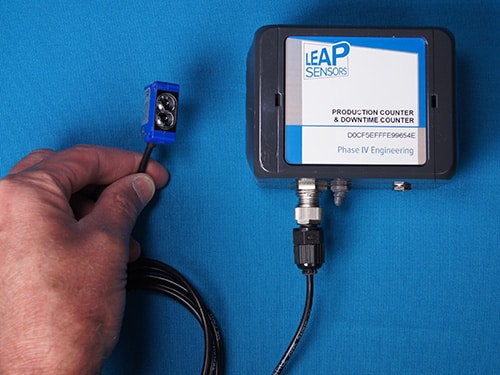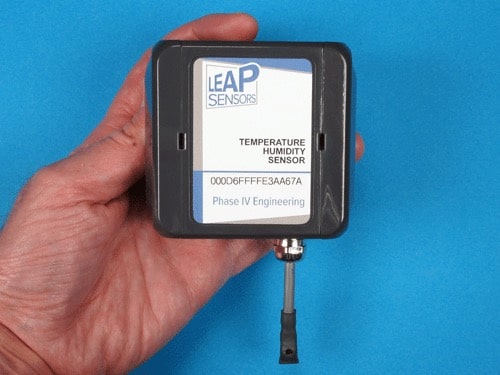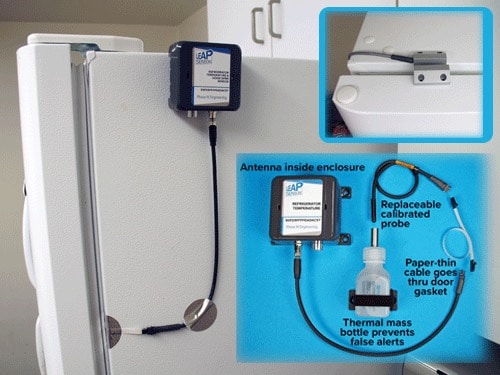-
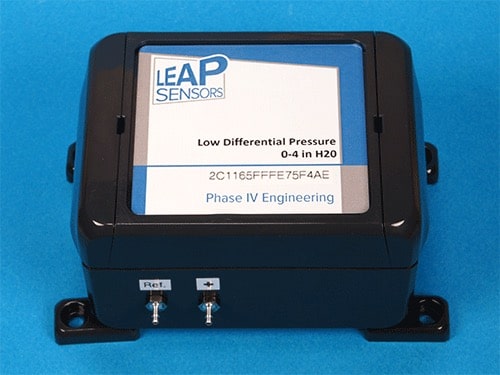 This very unique wireless sensor works by comparing the readings from one device node to another user-selected device node - then reporting the local pressure, local temperature - then differential pressure and temperature as compared to a user selected sensor. For example, sensor A is located outside at ambient temperature and pressure. Sensor B is located in a clean room under positive pressure and Sensor C is located in a different part of the cleanroom under a higher positive pressure. Sensor B could be configured to report its pressure and temperature and the differential pressure between Sensor B and Sensor A. (See the screen shot). Sensor C could be configured to report its pressure and temperature and the differential pressure and temperature between sensor C and sensor B. Sensor readings are reported in PSIA. Leverage the Leap SensorManager software to send text, email, or telephone alerts when a pressure, temperature, or delta-pressure or delta-temperature threshold is exceeded. Integrate the data from the differential pressure sensors into other software using our web-based API, Modbus, DNP3, or other data interface protocols. The wireless sensor can be configured with pressure sensors that have different ranges, resolutions, and accuracies for different applications. See the specification below for more information on the different options. Pressure sensors can be configured to specific applications. The pressure and temperature sensors in the photos have the pressure and temperature sensor sealed inside the enclosure with a pressure port in the back of the enclosure. Part of the breakthrough Leap Sensors® system. Build your quote here:
This very unique wireless sensor works by comparing the readings from one device node to another user-selected device node - then reporting the local pressure, local temperature - then differential pressure and temperature as compared to a user selected sensor. For example, sensor A is located outside at ambient temperature and pressure. Sensor B is located in a clean room under positive pressure and Sensor C is located in a different part of the cleanroom under a higher positive pressure. Sensor B could be configured to report its pressure and temperature and the differential pressure between Sensor B and Sensor A. (See the screen shot). Sensor C could be configured to report its pressure and temperature and the differential pressure and temperature between sensor C and sensor B. Sensor readings are reported in PSIA. Leverage the Leap SensorManager software to send text, email, or telephone alerts when a pressure, temperature, or delta-pressure or delta-temperature threshold is exceeded. Integrate the data from the differential pressure sensors into other software using our web-based API, Modbus, DNP3, or other data interface protocols. The wireless sensor can be configured with pressure sensors that have different ranges, resolutions, and accuracies for different applications. See the specification below for more information on the different options. Pressure sensors can be configured to specific applications. The pressure and temperature sensors in the photos have the pressure and temperature sensor sealed inside the enclosure with a pressure port in the back of the enclosure. Part of the breakthrough Leap Sensors® system. Build your quote here: -
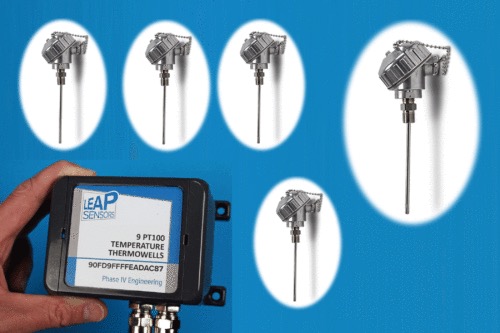 The Leap wireless thermowell sensor can integrate 1 to 9 PT100 thermowells. See our standard offerings below. Contact us if you need a different temperature probe. Part Numbers: LBI0-xT04 - 4" probe, LBI0-xT05 - 6" probe, LBI0-xT06 - 12" probe. x=number of thermowells. Part of the breakthrough Leap Sensors® system. This wireless sensor is typically customized to specific applications. The price is for the basic, one-thermowell model. Include your requirements and we will reply with an exact quote. Build your quote here:
The Leap wireless thermowell sensor can integrate 1 to 9 PT100 thermowells. See our standard offerings below. Contact us if you need a different temperature probe. Part Numbers: LBI0-xT04 - 4" probe, LBI0-xT05 - 6" probe, LBI0-xT06 - 12" probe. x=number of thermowells. Part of the breakthrough Leap Sensors® system. This wireless sensor is typically customized to specific applications. The price is for the basic, one-thermowell model. Include your requirements and we will reply with an exact quote. Build your quote here: -
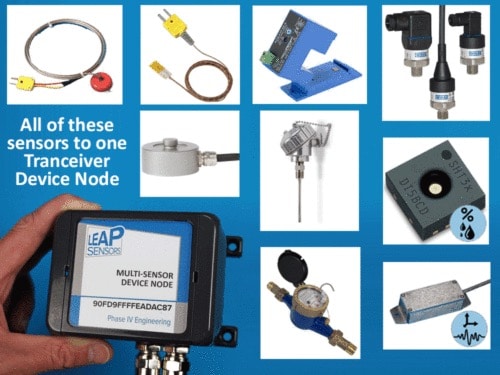 A true leap advancement in wireless sensing, our multisensor node will support large number of sensors of different types on one Leap transceiver node. Part of the breakthrough Leap Sensors® system. Contact us for an exact quote to your specific application. Build your quote here:
A true leap advancement in wireless sensing, our multisensor node will support large number of sensors of different types on one Leap transceiver node. Part of the breakthrough Leap Sensors® system. Contact us for an exact quote to your specific application. Build your quote here: -
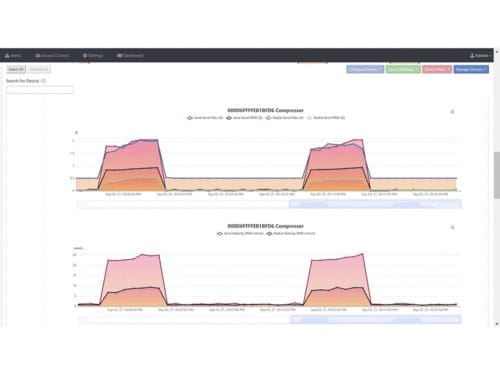 This Leap software option installs on the Leap gateway. The software is comprised of two main parts - a user interface and a database. The software allows the user to monitor the sensor data, graph data, set email and text alerts, change sensor settings. The software is web-based - so a user logs into the software using a standard web browser, such as Chrome. There is no software or app to install. For PC-based systems, the software runs on a powerful single-board computer inside the Leap gateway. Cloud or server-based systems can be accessed with any web-connected device and the user password.Contact Us
This Leap software option installs on the Leap gateway. The software is comprised of two main parts - a user interface and a database. The software allows the user to monitor the sensor data, graph data, set email and text alerts, change sensor settings. The software is web-based - so a user logs into the software using a standard web browser, such as Chrome. There is no software or app to install. For PC-based systems, the software runs on a powerful single-board computer inside the Leap gateway. Cloud or server-based systems can be accessed with any web-connected device and the user password.Contact UsPrices, Quotes, Questions...
Need a price or a quote? Have questions? Want to talk to an expert? Need a custom solution?Contact Us -
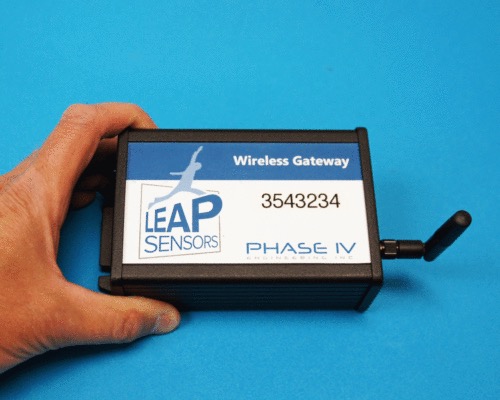 Wireless gateway receives the sensor data over the air from the Leap wireless transceiver nodes, then passes the data to the Leap software. This version connects to a local network via a cellular network. Easy to install - plug in the gateway, open a web browser, log in, and the Leap Sensors system is ready to manage. Part of the breakthrough Leap Sensors® system. Build your quote here:
Wireless gateway receives the sensor data over the air from the Leap wireless transceiver nodes, then passes the data to the Leap software. This version connects to a local network via a cellular network. Easy to install - plug in the gateway, open a web browser, log in, and the Leap Sensors system is ready to manage. Part of the breakthrough Leap Sensors® system. Build your quote here: -
 Wireless gateway receives the sensor data over the air from the Leap wireless transceiver nodes, then passes the data to the Leap software. This version connects to a local network via standard Ethernet cable and RJ-45 connector. When the software resides on the gateway, the software may also be directly accessed using the USB port on the gateway. Easy to install - plug in the gateway, open a web browser, log in, and the Leap Sensors system is ready to manage. Part of the breakthrough Leap Sensors® system. Build your quote here:
Wireless gateway receives the sensor data over the air from the Leap wireless transceiver nodes, then passes the data to the Leap software. This version connects to a local network via standard Ethernet cable and RJ-45 connector. When the software resides on the gateway, the software may also be directly accessed using the USB port on the gateway. Easy to install - plug in the gateway, open a web browser, log in, and the Leap Sensors system is ready to manage. Part of the breakthrough Leap Sensors® system. Build your quote here: -
 Wireless gateway receives the sensor data over the air from the Leap wireless transceiver nodes, then passes the data to the Leap software. This version connects to a PC via a USB cable. By changing the software configuration, it may be connected to a Local Area Network via an Ethernet Cable. The Leap web-based User Interface and database software run on a powerful single-board computer inside the gateway. Just plug in the gateway, open a web browser, log-in, and you are ready to interact with your Leap Wireless Sensor system. Part of the breakthrough Leap Sensors® system. Build your quote here:
Wireless gateway receives the sensor data over the air from the Leap wireless transceiver nodes, then passes the data to the Leap software. This version connects to a PC via a USB cable. By changing the software configuration, it may be connected to a Local Area Network via an Ethernet Cable. The Leap web-based User Interface and database software run on a powerful single-board computer inside the gateway. Just plug in the gateway, open a web browser, log-in, and you are ready to interact with your Leap Wireless Sensor system. Part of the breakthrough Leap Sensors® system. Build your quote here: -
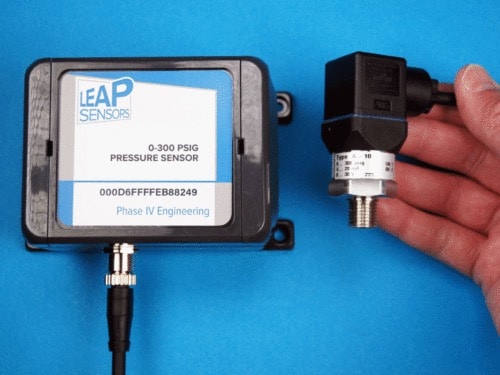 The Leap wireless pressure transceiver can integrate with every type of WIKA pressure transducer - 4-20mA, 0-10V, and I2C outputs.
The Leap wireless pressure transceiver can integrate with every type of WIKA pressure transducer - 4-20mA, 0-10V, and I2C outputs.Configured to Your Exact Application
The external industrial sensor may be powered by an optional 12 or 24V power supply driven from the over-sized Leap Sensor node battery. No external power source is needed with the 12/24V power supply option (LP-1PXX). See below for other options to configure this industrial wireless sensor node to your exact needs. Contact us to find the best combination or let us know which WIKA sensor you would like us to integrate. See the data sheet for detailed specifications. Part of the breakthrough Leap Sensors® system. Build your quote here:
